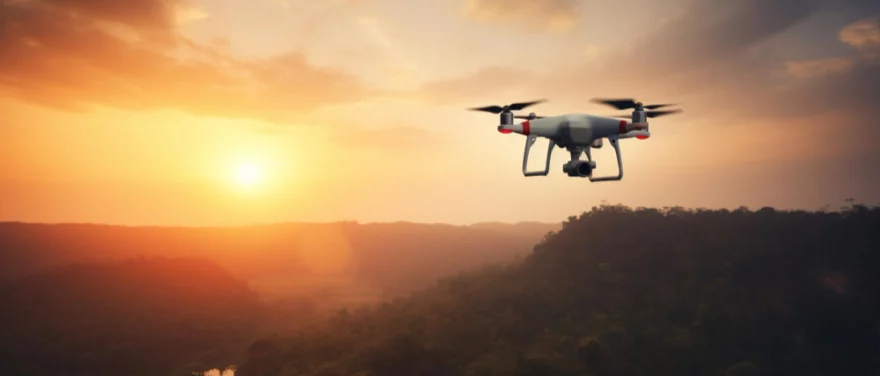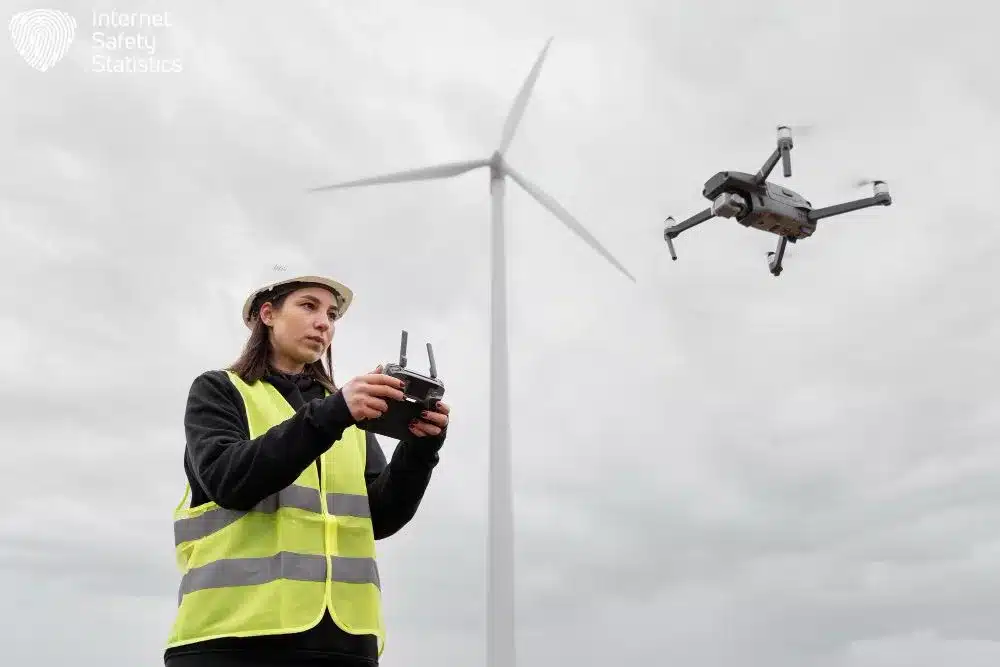
With the rapid advancements in technology, drones have become increasingly prevalent in various sectors, from recreational use to commercial applications. However, as drones soar through the skies, concerns regarding privacy infringement have also taken flight. In this article, we delve into the intricate landscape of drone privacy laws, shedding light on the regulations and measures put in place to address these pressing concerns.
What are Drones Used for?

Drones, also called Unmanned Aerial Vehicles (UAVs), are basically flying robots controlled remotely or programmed to fly on their own. They’re like little aeroplanes or helicopters without a pilot onboard. But instead of carrying people, they carry cameras, sensors, or even packages! These modern marvels take to the skies for a variety of fascinating tasks:
Disaster Relief
When nature unleashes its fury, drones deliver vital supplies to remote areas, assess damage from a safe distance, and map affected regions for faster recovery. These robotic wonders provide critical support, aiding in disaster relief efforts worldwide.
Law Enforcement
Keeping a watchful eye from above, drones help patrol borders, deter illegal activities, and even capture stunning aerial evidence. With their ability to cover large areas swiftly and efficiently, drones enhance the capabilities of law enforcement agencies, contributing to public safety initiatives.
Precision Agriculture
In the realm of agriculture, drones serve as tiny robotic farmers, mapping fields, monitoring crop health, and even spraying pesticides with pinpoint accuracy. By providing real-time data and insights, drones revolutionise precision agriculture, maximising yields and minimising environmental impact.
Delivery Done Right
Forget traffic jams! Drones zip through the air, delivering packages to your doorstep (or even your balcony!) faster and more efficiently than ever before. With their ability to navigate congested urban areas and reach remote locations, drones redefine the concept of last-mile delivery, offering unparalleled convenience to consumers.
Construction Crewmates
These sky-high helpers inspect bridges, map construction sites, and even deliver tools to hard-to-reach areas, making construction safer and more efficient. With their agility and versatility, drones streamline construction processes, reducing costs and improving project timelines.
Wildlife Guardians
Soaring alongside feathered friends, drones monitor endangered species, track animal migration patterns, and even deter poachers in protected areas. By providing aerial surveillance and monitoring capabilities, drones play a crucial role in wildlife conservation efforts, helping to preserve biodiversity for future generations.
Filming Magic
From Hollywood blockbusters to breathtaking documentaries, drones capture stunning aerial shots and offer unique perspectives, adding a touch of wonder to our visual storytelling. With their ability to navigate diverse landscapes and capture dynamic footage, drones revolutionise the art of filmmaking, inspiring creativity and innovation in the entertainment industry.
Inspection Masters
From towering wind turbines to sprawling solar farms, drones perform intricate inspections, identifying potential issues and preventing costly downtime. With their ability to access hard-to-reach areas and capture high-resolution imagery, drones enhance the efficiency and safety of infrastructure inspections, ensuring optimal performance and reliability.
And this is just the beginning! As drone technology evolves, their potential seems limitless. So next time you see a drone buzzing by, remember—it’s not just a machine; it’s a symbol of innovation, helping us explore, protect, and even deliver in ways we never imagined before.
What are the Current International Drone Privacy Laws?
Drone privacy laws are a complex and evolving topic as technology advances and countries grapple with balancing innovation with privacy concerns. Here’s a general overview of the current international landscape:
Global Laws
Drone privacy regulations vary widely across nations, lacking a universal framework and instead forming a patchwork of individual regulations established by each country. While the International Civil Aviation Organisation (ICAO) provides guidelines for drone operation safety, it does not directly address privacy concerns. Consequently, countries have developed their own laws and regulations to address the growing challenges posed by drones in relation to privacy infringement.
This decentralised approach reflects the diverse range of cultural, legal, and technological factors influencing drone usage and privacy protection worldwide. As a result, stakeholders, including governments, industry players, and advocacy groups, must navigate this complex landscape to ensure the responsible and ethical use of drone technology while safeguarding individual privacy rights.
Regional Laws
While no single international law governs drone privacy globally, regional organisations are playing a crucial role in developing and harmonising regulations. Here’s a closer look at some key regional dynamics:
European Union (EU)
The EU boasts the most comprehensive and detailed drone privacy framework, established through the EU Drone Regulation (2019/947). This regulation mandates:
- Data minimisation: Drones can only collect data necessary for a specific purpose (e.g., aerial photography).
- Transparency: Pilots must inform individuals about data collection and purpose.
- User consent: For certain sensitive data collection (e.g., facial recognition), explicit user consent is required.
- Data security: Implementing appropriate measures to protect collected data.
The EU framework serves as a benchmark for other regions and individual countries, influencing their legislative approaches.
Other Regional Efforts
- African Union (AU): Recognising the growing drone usage in Africa, the AU is developing its own guidelines. Inspired by the EU model, these guidelines focus on data protection, responsible use, and safety measures.
- Asia-Pacific Economic Cooperation (APEC): APEC encourages member economies to share best practices and collaborate on harmonising drone regulations, considering privacy concerns alongside safety and security.
- Latin America: Several Latin American countries, like Argentina and Brazil, have implemented drone regulations with varying levels of privacy protection. Efforts are underway to develop regional frameworks considering cultural and socio-economic contexts.
National Laws
Drone privacy laws exhibit significant variation between countries, with some nations like Japan implementing stringent regulations while others maintain minimal restrictions. Across jurisdictions, there is a prevalent focus on data protection, akin to existing data privacy laws, with national regulations often emphasising the safeguarding of personal data collected by drones.
Additionally, many countries impose restrictions on drone operations in sensitive areas such as airports, military zones, or critical infrastructure sites, aiming to mitigate security risks and protect public safety. This diversity in regulatory approaches underscores the complexity of balancing innovation and privacy concerns within the global landscape of drone usage.
Key Components of Drone Privacy Laws

Drone privacy laws encompass several essential components aimed at safeguarding individual privacy rights while balancing the benefits of drone technology. Understanding these key components is crucial for both drone operators and the general public to navigate the legal landscape effectively:
Consent and Notification Requirements
Drone privacy laws often include provisions regarding consent and notification requirements for drone operations. These requirements outline when drone operators are obligated to obtain consent from individuals whose privacy may be impacted by drone activities or provide notification about the presence of drones in certain areas. Exceptions to these requirements may exist for specific circumstances, such as law enforcement activities or emergency situations.
Prohibited Activities and Restrictions
Another critical aspect of drone privacy laws involves defining prohibited activities and imposing restrictions on drone usage to protect privacy. These regulations may outline specific actions that are prohibited under drone privacy laws, such as unauthorised surveillance or trespassing on private property. Additionally, restrictions may be in place regarding where drones can be flown, with designated no-fly zones around sensitive areas such as airports, military installations, and critical infrastructure sites.
Enforcement Mechanisms and Penalties
Effective enforcement mechanisms and penalties are essential components of drone privacy laws to ensure compliance and accountability. These mechanisms may include regulatory oversight by government agencies responsible for drone regulation and enforcement, such as the Federal Aviation Administration (FAA) in the United States. Penalties for violations of drone privacy laws can range from fines and penalties to criminal charges, depending on the severity of the offence and the applicable regulations.
By understanding and adhering to these key components of drone privacy laws, drone operators can navigate legal requirements responsibly, mitigate privacy risks, and contribute to the safe and ethical integration of drones into society.
Additionally, ongoing dialogue and collaboration between stakeholders, including government agencies, industry players, and privacy advocates, are essential to address emerging challenges and ensure that drone privacy laws remain effective and relevant in an evolving technological landscape.
Compliance and Best Practices for Drone Users
Ensuring compliance with drone privacy laws is paramount for drone operators to uphold ethical standards and mitigate potential privacy risks. Adopting best practices can help promote responsible drone usage and protect individual privacy rights. Here are some key considerations for drone users:
Obtaining Necessary Permits and Authorisations
Drone operators should familiarise themselves with applicable regulations and obtain any necessary permits or authorisations before conducting drone operations. This may include registering drones with relevant aviation authorities and obtaining permits for specific types of flights, such as commercial or recreational activities.
Implementing Privacy Protection Measures
Proactively implementing privacy protection measures can help mitigate potential privacy risks associated with drone operations. This may include using built-in privacy features such as geofencing to restrict drone flight in sensitive areas or configuring drones to minimise data collection and storage of personal information.
Respecting Privacy Rights and Property Boundaries
Drone operators should respect individuals’ privacy rights and avoid infringing upon their privacy while conducting drone operations. This includes refraining from conducting surveillance activities without proper consent and respecting property boundaries when flying drones over private property.
Adhering to Safe and Responsible Flying Practices
Practising safe and responsible flying practices is essential to minimise the risk of accidents and ensure public safety. Drone operators should follow established safety guidelines, such as maintaining a visual line of sight with the drone, avoiding flying in adverse weather conditions, and conducting pre-flight checks to ensure the drone is in proper working condition.
Staying Informed and Educated
Staying informed about changes to drone regulations and best practices is crucial for drone operators to maintain compliance and adapt to evolving legal requirements. This may involve participating in training programs or workshops, joining relevant industry associations, and staying updated on guidance issued by aviation authorities.
Overall, the evolution of drone technology brings forth both opportunities and challenges, particularly concerning privacy concerns. As we strive to harness the full potential of drones, it is imperative to establish robust regulatory frameworks and promote ethical practices among drone operators. By fostering collaboration and accountability, we can ensure that drones serve as instruments of progress while safeguarding individual privacy rights.
